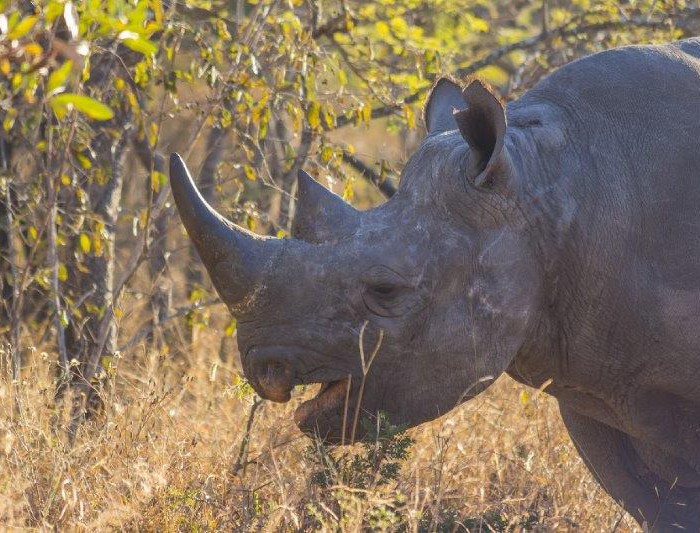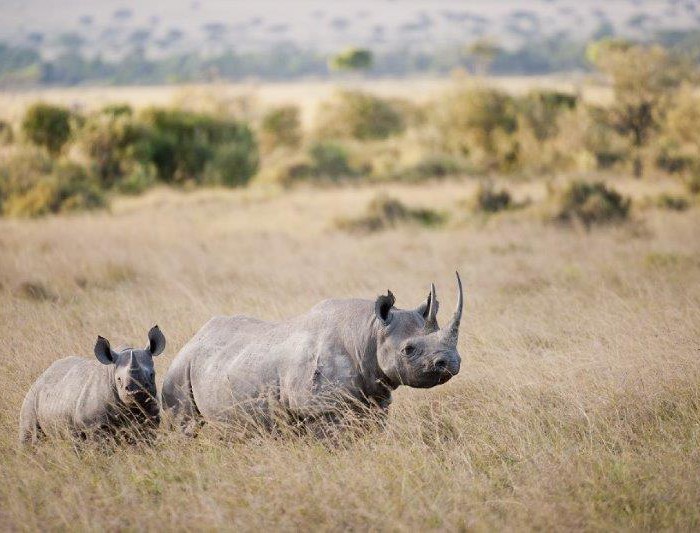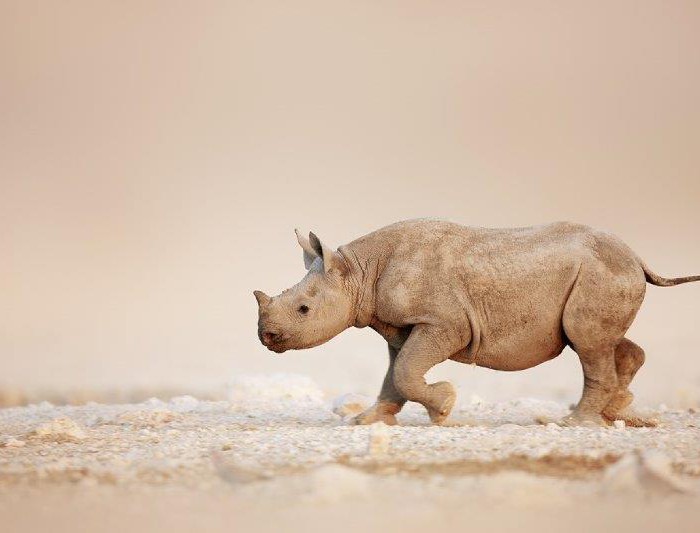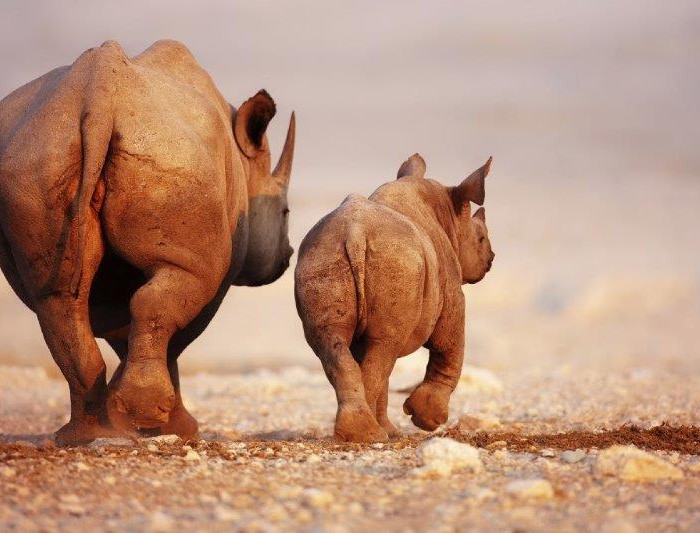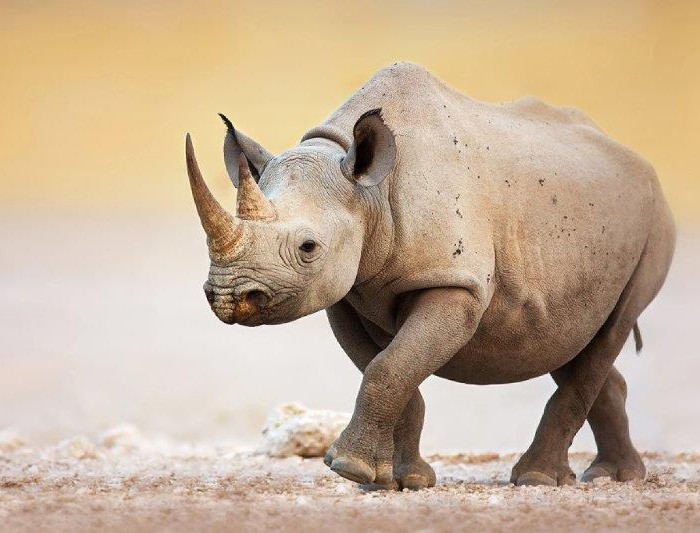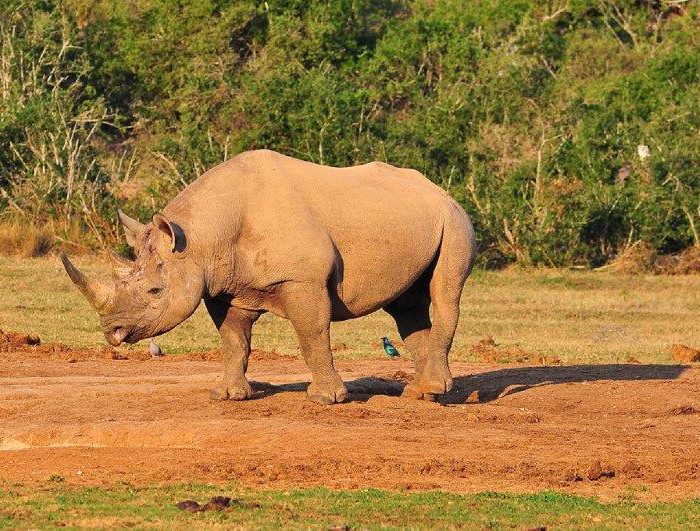The black rhino is considerably smaller than the white rhino but can still exceed 1 tonne in weight. They browse using their upper lip which is triangular and flexible to pick individual leaves from trees and bushes as it selectively feeds.
The black rhino used to be Africa’s most widespread and numerous rhino with hundreds of thousands in 1900. Due to poaching this number has plummeted to 4,300 which makes the species critically endangered.
Three of the eight regional subspecies of black rhino have now become extinct and viable populations of only three subspecies remain. See further facts on rhinos in general as well as the white rhino.
The rhino is one of the Big Five. To find out how this term came about and the other four animals that make up the Big Five please check out our article: 25 astonishing facts about Africa’s Big 5.
Vote for the fact you find most fascinating
Black rhino often get sores behind their shoulders as this is one area they can’t cover in mud to rid themselves of parasites such as ticks. These lesions are sometimes made worse by oxpeckers keeping the wound open.
By eating succulents a black rhino can go 4 to 5 days without water. They will also dig for water in sandy river beds when the need arises.
Black rhinos are incredibly nimble considering their size and can run at up to 56 KPH (15.6 metres per second).
When a black rhino feeds on woody and fibrous plants the munching can be heard up to 400 metres away.
It is rare for a calf to have another to play with. Instead they have been seen playing with plants and sticks.
Black rhinos are renowned for being bad tempered. A mother with calf can be extremely dangerous.
Female black rhino are usually with a calf and the males are solitary. However, they will often come together in numbers (13 have been recorded) at waterholes and salt licks.
50% of black rhinos are killed when fighting which is the highest mortality rate for any mammal intraspecies conflict.


